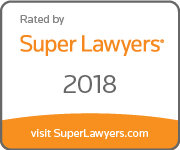During the Bush Administration, FDA had an unwritten and informal enforcement policy that allowed a website selling dietary supplements to link to scientific literature discussing nutrients in those supplements and diseases, provided that the page containing the scientific literature was at least “two clicks” away from product pages in question. That Bush era policy appears not to be followed in the Obama FDA. Under Commissioner Hamburg, FDA has not directly or indirectly explained its position on the informal enforcement policy, but it appears to us that the FDA no longer adheres to it. Enforcement action appears to occur against parties who attempt to rely on the two click separation without regard to the former, informal position of the agency.
When Congress enacted DSHEA in 1994, the internet was a novel concept and, thus, Congress only addressed the placement of third-party literature displayed in an establishment. In the virtual world of the internet, however, there is no physically separate area for third-party literature. But, virtual distance is possible. In the 1960’s a federal court decision struck down an attempt by FDA to deem honey in a health food store an unapproved new drug because the health food store also had a library containing information on the therapeutic effects of honey. U.S. v. 24 Bottles “Sterling Vinegar & Honey, etc.” (Balanced Foods, Inc.),338 F.2d 157, 158 (2d Cir. 1964). That case, cited in the legislative history underlying the DSHEA, remains good law. No federal court has applied the concept in the context of the internet where the equivalent would be a policy, such as the unwritten and informal “two click” rule, where distance in cyberspace separates a product reference from science concerning the therapeutic effects of the ingredient or ingredients that are contained in the product. Please note that under the Bush Administration “two click” policy, two clicks were not the same as a “double-click.” A double click moves from one page to another. “Two clicks” meant there must be an intervening page, two links, between the scientific information and the product promotion.
The “two click” policy was an unwritten, informal agency position that was designed to limit FDA regulation of claims by dissuading enforcement (what FDA calls the exercise of “enforcement discretion,” an apparent oxymoron). It is unclear if the present FDA, when confronted with a case of the two clicks will directly address its current position on the matter or will simply enforce against the party in question under the agency’s “intent to use” doctrine without articulating why the two clicks are no longer acceptable. Even during the Bush years, FDA could choose at any time and in any specific circumstance avoid following the informal “two click” policy, and any FDA regional office could choose at any time not to honor it and instead interpret FDA laws and regulations strictly to prevent indirect disease claims online.
FDA’s reliance on the informal “two click” policy has traditionally been subordinate to the agency’s “intended use doctrine.” The strength of the relationship between the science and an unapproved claim generally governs. Thus, the presence of any link between a product and disease claims can demonstrate an “intended use” for the product. Even if exempt from labeling under 21 U.S.C. § 343-2(a), FDA still may deem the information evidence of an intent to sell a product as an unapproved new drug. Thus, a specific product should not be cross-referenced with scientific literature strongly associating the product with a disease, and literature should be contained in its own standalone library site at least two clicks from any product or product sale listing. The deeper a consumer must search to draw a link between a product and the nutrient-disease literature, the less likely FDA will argue that the scientific literature is evidence of an intent to sell the product as a drug.
In sum, whether FDA’s informal “two click” policy survives in some way or has been rejected in its entirety, separation between suggestive science and product pages is essential to any defense against an agency attack on use of an online science library or article. It remains a provision in FDA’s final rule on structure/function claims that a reference in labeling to a scientific article, even one having a title that includes a nutrient-disease association, is permissible so long at the article is properly cited in support of a structure/function claim (meaning that the article must provide support for the claim of effect of a nutrient on a body structure or function without reference to disease). 65 Fed. Reg. 1000, 1024-25 (Jan. 6, 2000).







